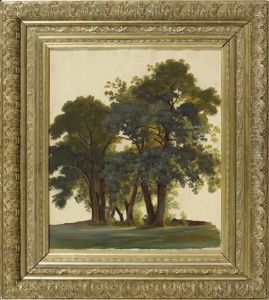Maximilien De Meuron Paintings
Maximilien De Meuron was a Swiss painter born in 1785 in Neuchâtel, Switzerland, into the prominent De Meuron family. His early life was marked by the influence of his family's status and the cultural environment of Neuchâtel, which was a center for the arts and intellectualism during his formative years. De Meuron showed an early interest in painting and pursued his passion with dedication, eventually studying under several accomplished artists of his time. His education in the arts was comprehensive, spanning various techniques and styles, which later contributed to the versatility observed in his work.
De Meuron's artistic career was characterized by his landscapes and scenes of everyday life, which captured the beauty and simplicity of the Swiss countryside as well as the intricate social dynamics of its inhabitants. His paintings are noted for their detailed realism, vibrant color palette, and the emotional depth they convey, making them highly valued among art collectors and historians alike. Throughout his life, De Meuron traveled extensively across Europe, drawing inspiration from different cultures and landscapes, which further enriched his artistic expression.
Despite facing the challenges common to artists of his time, including periods of financial instability and the evolving tastes of the art market, De Meuron achieved considerable recognition for his work. He exhibited in various prestigious galleries and salons, and his paintings were sought after by a diverse array of patrons, including members of European nobility and the burgeoning middle class. His contributions to Swiss art were significant, and he is remembered for his role in promoting the appreciation of landscape painting within Swiss culture.
Maximilien De Meuron passed away in 1868 in Neuchâtel. His legacy continues to be celebrated in Switzerland and beyond, with his works held in numerous public and private collections. De Meuron's life and art remain subjects of interest for scholars and enthusiasts of 19th-century European art, offering insights into the cultural and natural landscapes of his time as well as the broader movements within European art history.

